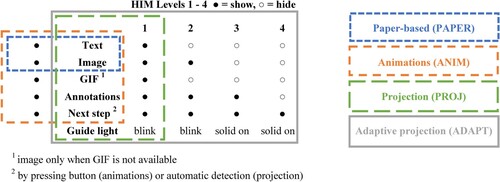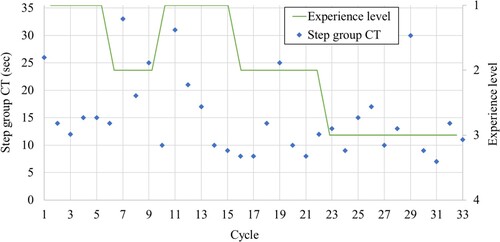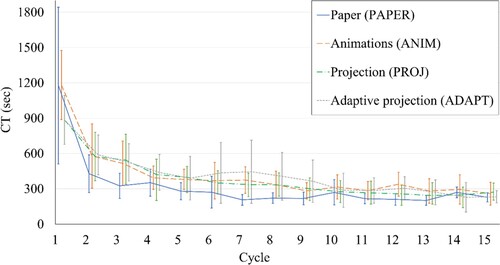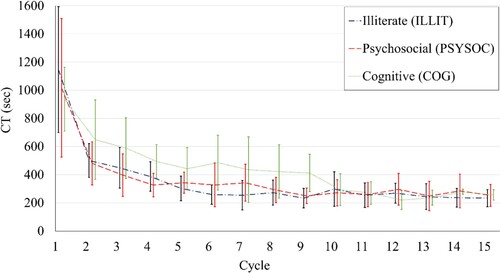Figures & data
Table 1. Overview of empirical studies on the effect of the form of instruction and disability on assembly performance (n/a = significance not assessed, * = significant difference, otherwise non-significant difference).
Figure 1. Forms of instruction studied with the elements inside a box.

Figure 2. Example of operator experience level (adaptivity of instructions) based on algorithm.

Figure 3. Effect of form of instruction on mean and SD (2σ) of CT in each cycle.

Figure 4. Effect of type of disability on mean and SD (2σ) of CT in each cycle.

Data availability statement
The data that supports the findings of this study is available from the corresponding author upon reasonable request.
